Pangu Separates the Sky from the Earth, Nüwa Creates Human Beings, Kuafu Chases the Sun – these are stories that happened on the other side of the Taiwan Strait, myths that we have heard of and are familiar with since we were children.
But did you know that on this island, we have our own creation myths - a giant holding up the sky, maple trees created mankind, and a goddess who created the world when she was out on a stroll?
All these exciting and fantastic myths happened right here in the rivers and mountains of this very land where we grew up. Through these myths and legends, our ancestors passed down the stories of how they settled down in the wilderness and brought forth the next generations, and how Taiwan came into being.
When many ethnic groups and religions form their own cultures, they would begin to explore the origins of life, including the creation of the universe, sky and earth, and how their ancestors were born. All of these stories are categorized as Creation myths. Creation myths are usually passed down from prehistoric times through oral tradition. Neighboring peoples and villages would also exchange and share their stories, thus a lot of creation myths may sound similar. For example, in many ancient civilizations, villages were located close to water sources. Legends concerning floods gradually became a common theme in many ancient peoples’ myths, such as the Epic of Gilgamesh from the Sumerian people in the Mesopotamia region, the story of "Noah’s Ark" from the Bible, and the story "Dayu Tames the Flood" from China.
Taiwan’s indigenous peoples also passed down many Creation myth stories. In the early days, villages were the basic administration and social unit, and they did not have written languages; therefore even among the same people, different villages may have slightly different versions of mythology stories, making the mythology system even more diverse and colorful.
If we look at mythologies from different indigenous groups, flood stories are a common theme found in every group. This shows that different ethnic groups share the experience of a large flood destroying the world during the ancient times. Water symbolizes a carrier of limitless power and energy. It destroys then rebirths, creating new civilization. Stories about shooting down suns are also commonly found among different groups, many indigenous mythologies tell of conflicts and battles between humans and the suns. In the world mythology system, sun-shooting legends are only found in China, Vietnam, and Greater Chinese culture regions such as Yunnan and Heilongjiang areas. Although Taiwan’s indigenous peoples are Austronesian peoples, we also have sun-shooting stories. In addition to common experiences and memories related to the struggles between man and nature and fighting droughts, sun-shooting stories among indigenous peoples offer a more imaginative and complex storyline. These stories also explain the origins of night and day, and the relationship between humans and the moon.
In the mythologies of various peoples, we can find legends on how the gods created the world and how people appeared in Taiwan. Let’s explore the Creation myths and common memories of Taiwan’s indigenous peoples together!
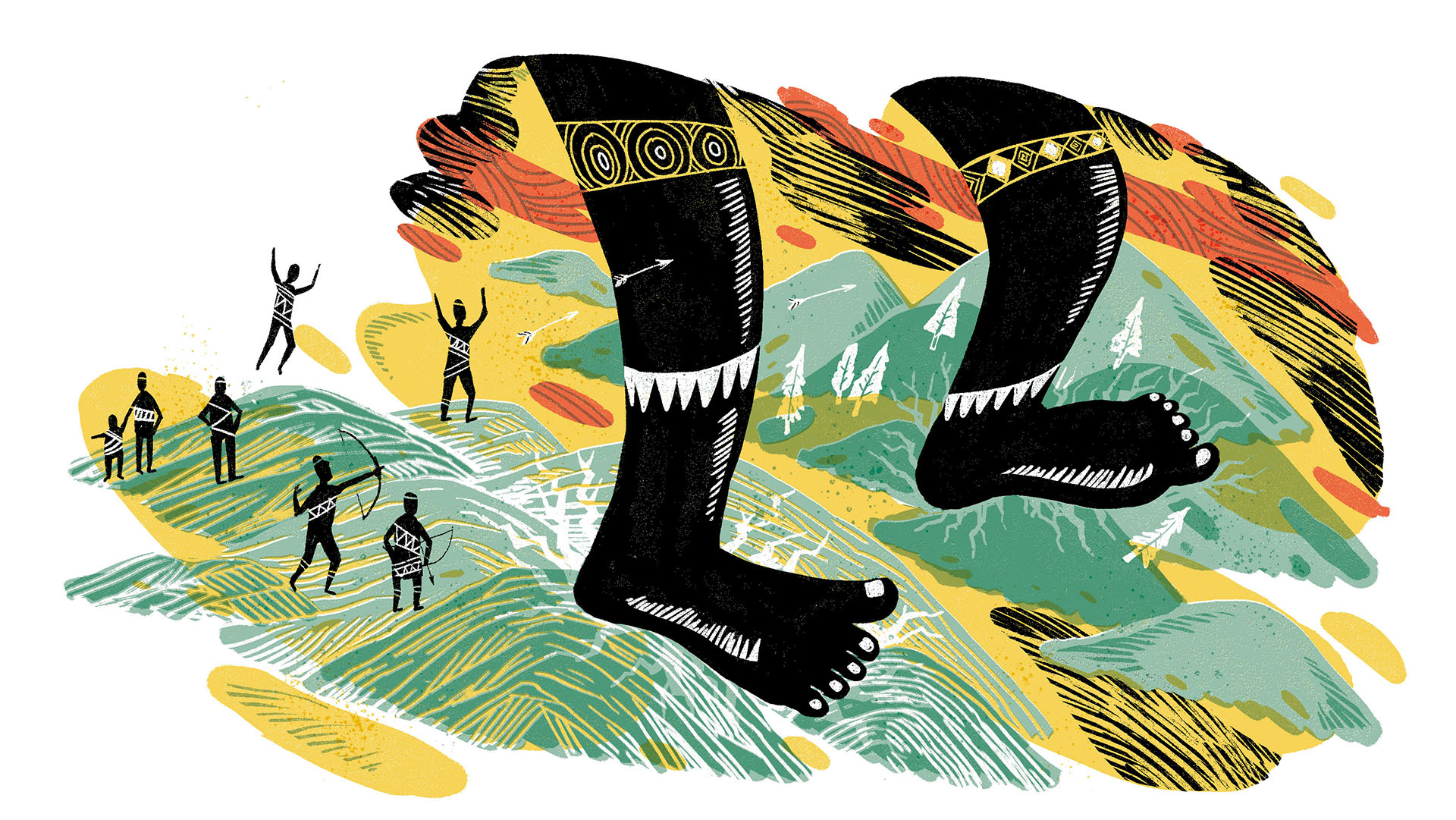
The Island Taiwan
was an Accidental Landing Spot of a Goddess?!
The creation of the sky and earth is an indispensable creation story in many ancient cultures. Pangu Separates the Sky from the Earth, God creating the universe and all creatures and man in the Bible, and the frost giants creating the heaven and earth with their bodies in Norse mythology are stories that we are familiar with. Not many heaven and earth Creation myths from Taiwan’s first peoples have been completely passed down. The most popular ones are the creation stories from the Tsou people ("Goddess Nivenu Creates the Land") and the Rukai people ("Goddess Megaigai Separates the Sky and the Earth").
In the Tsou legend, the earth was created by the goddess Nivenu. One day, Nivenu suddenly fancied a walk on the mortal world, so down she went. The gods in legends are usually bigger and taller than mortal men; and of course, a goddess would want to land gracefully, so Nivenu decided that two respective mountains would be the perfect spot to land. But since this was her first visit to the mortal world, Nivenu slightly lost her balance and accidently stomped down on one of the mountains, flattening it. It is said this flattened area is where the present Tfuya Hosa (“village”) on Ali Mountain is located, and the other mountain top she stepped on is where the present Tapang Hosa is.
However, after the goddess looked around the mountain area, she wanted to see more. So she walked to the coastal region. When she passed by mountains, walking on her big feet, the mountains collapsed and filled in the valleys, forming plains which gradually became the land we live on today. The might of these ancient giants are indeed powerful, as they can change the landscape just by strolling around.
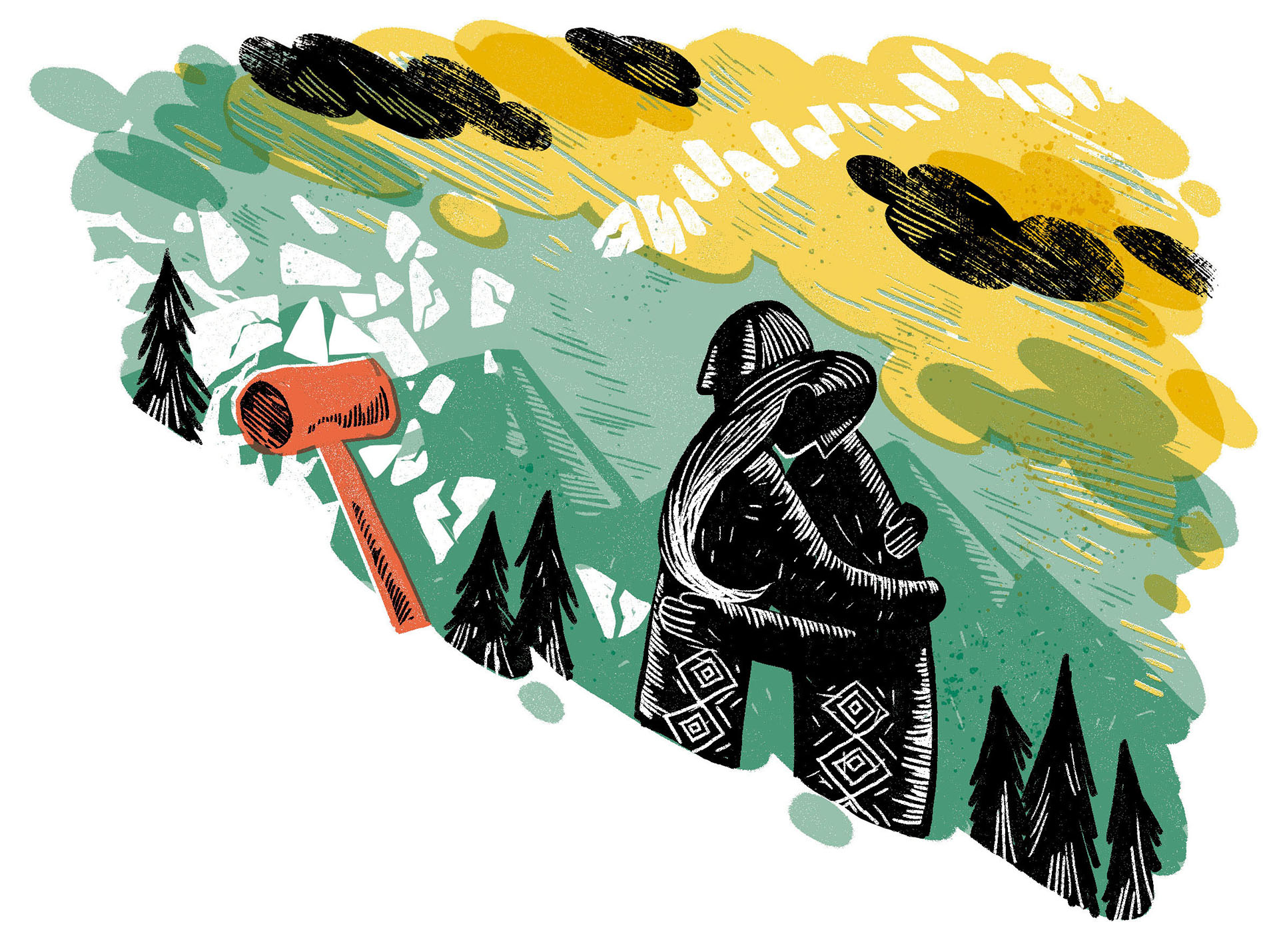
There is another Rukai story related to the sky and earth. Once upon a time, the sky and earth was connected with a very long stone staircase. Back then there was a family that had a very beautiful clay pot at their doorstep. After a while, out of nowhere, an egg and a hundred-pacer snake appeared in the clay pot. The snake curled around the egg to protect it. Later the egg hatched, and out came a beautiful girl. Locals believed that this girl was an incarnation of a goddess, and thus named her Megaigai. Megaigai grew into an extremely beautiful young woman. (After all, when she was born, she was already considered as a goddess; of course she would grow to be as beautiful as one later.)
One day a god in the sky named Gulele happened to see Megaigai. He was deeply attracted to her beauty and instantly fell in love with her. Gulele hurried down the stone stairs to earth and began to passionately woo the girl. The charismatic god eventually won the heart of Megaigai and the couple married. After the wedding, one by one Gulele’s family began to climb up the stone staircase back to their home in the sky. Seeing this, Megaigai was worried that her husband would one day return to the sky as well. So she found an ax and destroyed the stone staircase. Gulele had no choice but to stay and live on earth forever, and the mortal world and the sky was forever separated.
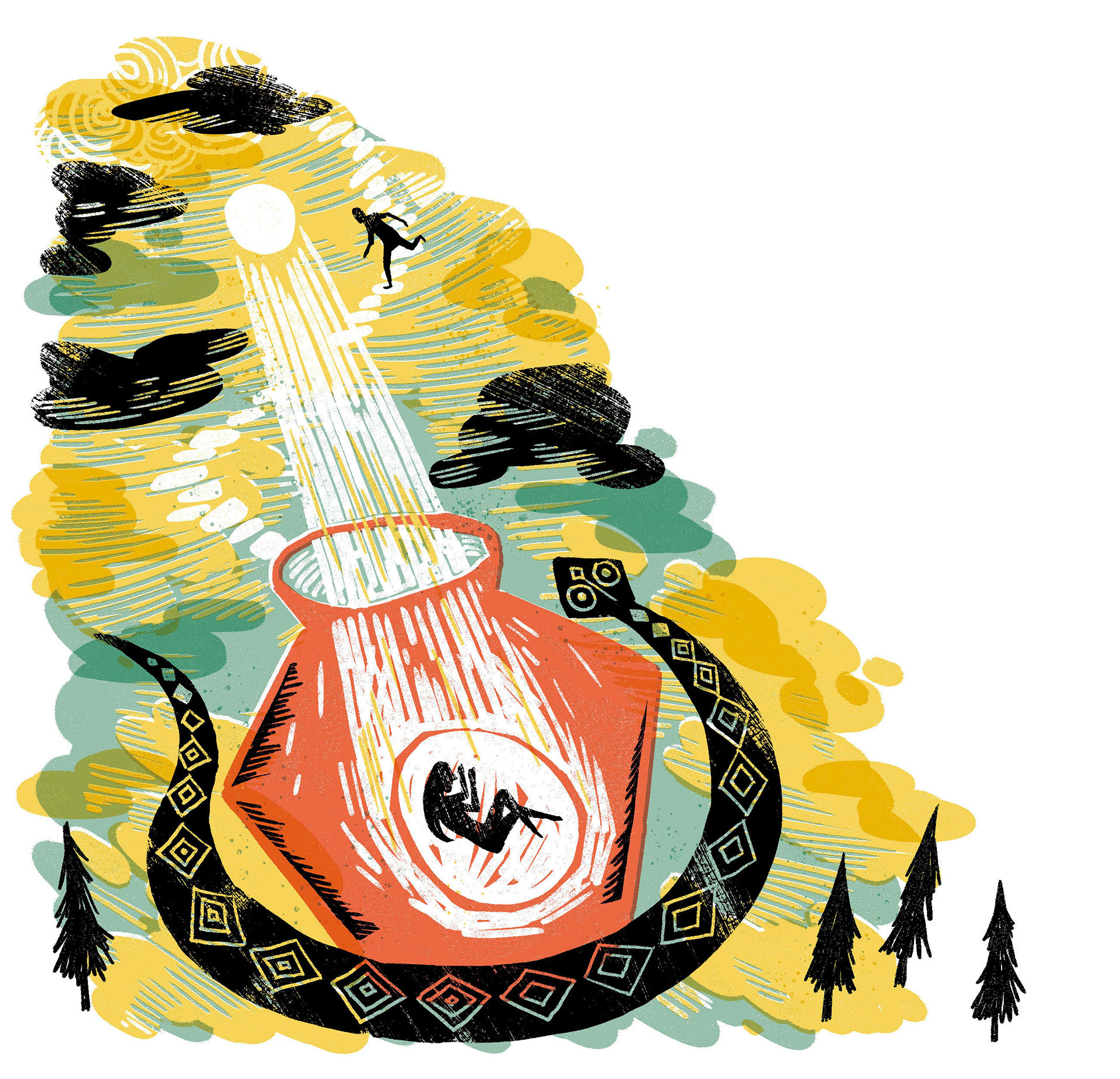
In Paiwan beliefs, there are also stories about the sky and earth. But theirs are not romantic love stories that talk about destroying your lover’s way home to keep him beside you forever, nor stories about a playful goddess who wanted to visit the mortal world. In Paiwan beliefs, Dawu Mountain is a sacred space of the Paiwan people. The Paiwan people view Dawu Mountain as a shared space between the sky, mortal world, and earth. The top of the mountain belongs to the sky. They believe their ancestors came to the mortal world from there and settled down to a pleasant life here; therefore Dawu Mountain is very sacred to them. Later generations of Paiwan people still honor this belief which shows the ancestors’ respect towards the land and their mythical interpretation of the environment they live in.
In the indigenous peoples Creation myths, the sky and earth already exist. The Goddess Nivenu and Megaigai changed and shaped an already existing world and space. The Katratripulr Village of the Pinuyumayan people has stories about an Elder God creating the sky and the earth, yet it did not say how the world was created. Maybe this also reflects the world view of our ancestors: they believe that the world was not created by mankind and had already existed for a very long time before human beings appeared. So we should respect the natural environment and live in harmony with all creatures, after all, human beings are not the greatest creatures on Earth!
Animals
did not Just Randomly Appear
Creation myths do not only talk about how the world was created, they also explain how all life forms appeared and grow. In Judaism and Christianity, God created all creatures; in Hinduism, the god Brahma created all life. In Greek mythology, when the city Athens was built, they wanted to name it after a god. Poseidon, the god of the sea, and Athena, the goddess of wisdom, both wanted the city. Poseidon conjured a stallion which represented armed forces and war, and Athena produced an olive branch which symbolized peace and economic prosperity. The citizens choose Athena’s offer and named the city “Athens”, a city under Athena’s protection. Western myths talk about the origins of the land and flora and fauna, and Taiwan also has native legends and myths that serve similar purposes. A Pinuyumayan legend explains the origins of plants and animals – the latter was actually born from plants!
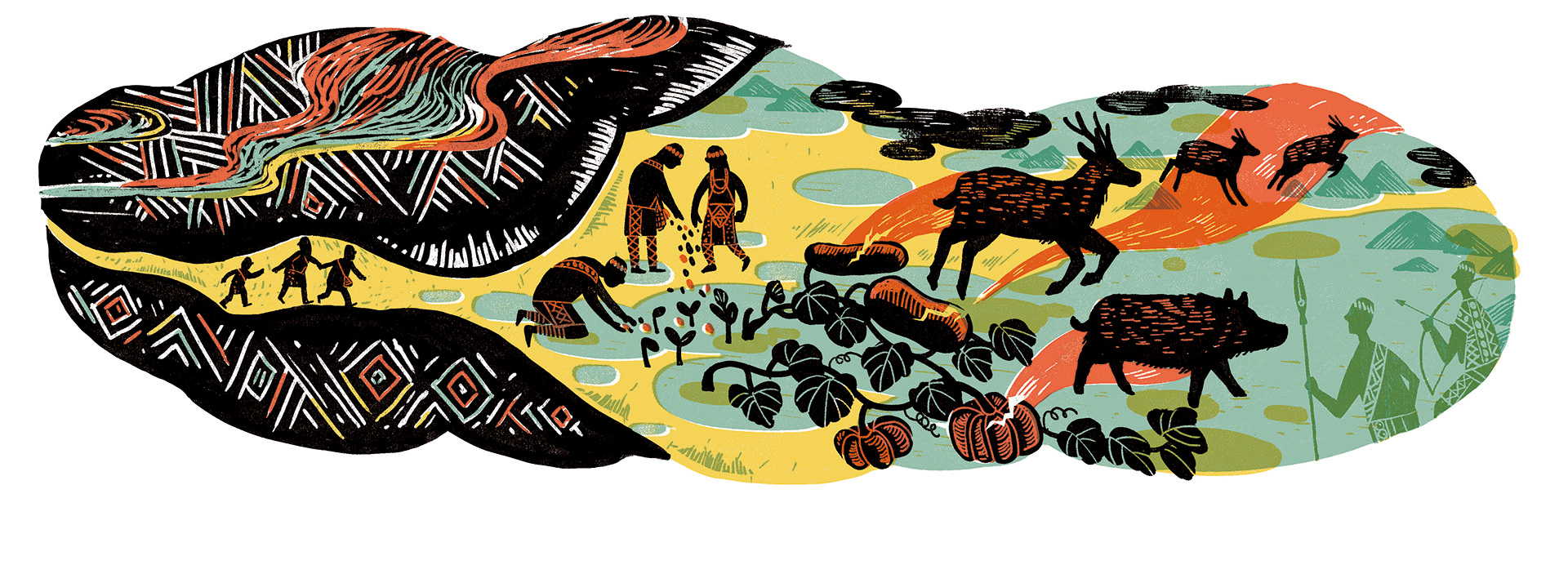
Once upon a time, a couple had three children. All parents know that it is not easy to raise a child, as children need to have sufficient food and nourishment to grow healthily. But back then, there were not many plants and animals in the world to sustain the family. The parents decided to go the sky, where the gods lived, and ask for seeds for animals and plants so they could grow and raise them themselves. The couple successfully obtained the seeds, but when they were on their way home, they were trapped in the tunnel connecting the mortal world and the sky.
At this time, a drought ravished the land, only present Chulu in Taitung still had water. The three children, who were left behind in the mortal world, used part of their mother’s weaving loom as a shoulder pole to go fetch water with the villagers. But the children could not keep up with the villagers, and eventually lagged so far behind that they lost their way. Suddenly, they found themselves in the tunnel connecting the mortal world and the sky and saw their trapped parents. The parents, unable to leave the tunnel, learned that their children were living very hard lives in the mortal world, so they gave the animal and plant seeds from the gods to the children, and told them how to plant and grow them.
The children followed their parents’ instructions and returned to the mortal world. They planted the various melon seeds and waited. When the melons ripened, a number of animals came out of the melons: sambars, muntjacs, boars, and goats. The villagers had never seen animals like this, much less animals that came out of plants! Many frightened villagers began to shoo these animals away with sticks. Some animals ran away and became wild animals, others that were afraid of living in the wild stayed behind and became livestock raised by the villagers.
This story is not only an indigenous myth, but also shows how indigenous people define the role of animals. In the ancient times, animals and plants were food sources for humans. Adventurous wild animals roamed freely in the mountains and were not that afraid of humans. Hunters must be respectful and face various challenges during the hunt. On the other hand, livestock animals chose to be raised by humans, and thus have to be caged and will one day be slaughtered.
It Goes Both Ways:
Humans Create Poo, Poo Create Humans
After talking about how the sky, earth, flora and fauna came into being, now let’s talk about something important: how “we” came to this world. Stories about how human beings appeared show how different civilizations envision their ancestors. In many human creation myths that we are familiar with, the ancestors are usually made out of clay. For example, Nüwa made people out of clay, and God created Adam out of the dust of the earth. Many indigenous creation myths also mention how humans were created. The most popular versions being humans came from rocks, bamboo, or from a clay pot. In the Tsou Creation myth, the god Hamo created humans, and the Bunun people believe that man was born from insects and feces. Both are very unique stories. After all, nowadays it’s hard to believe that people would think their ancestors were born from insects or feces.
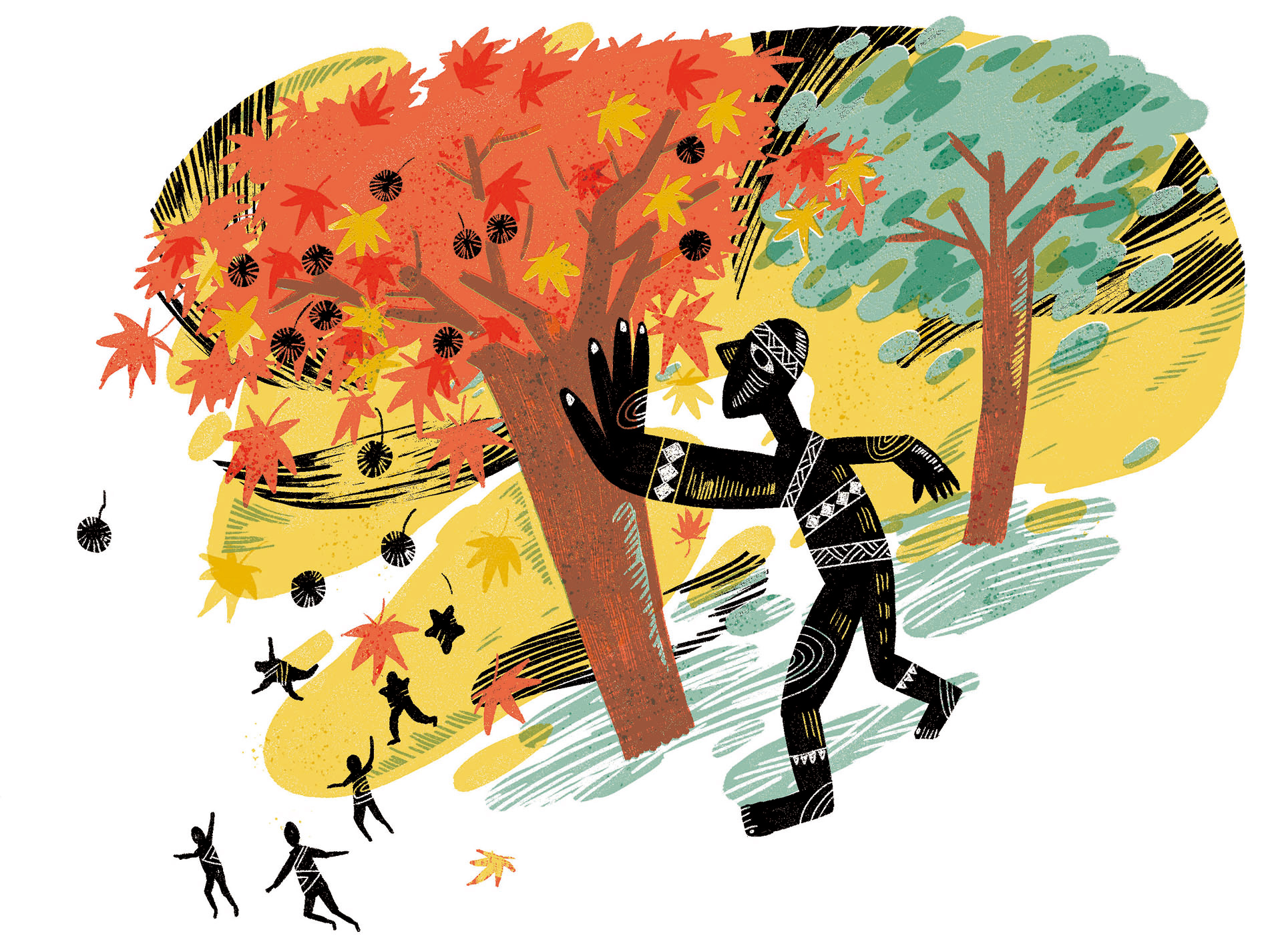
There are two versions of the Tsou human creation myth. One is that the goddess Nivenu planted seeds and the seeds became humans; the other is that the god Hamo came down to the mortal world to live with the wild beasts. The gods in Tsou myths are a rowdy bunch, and one day Hamo began to shake the maple trees on the mountains, because he felt like it. The fruit from the trees fell onto the ground and became the ancestors of the Tsou people.
In the Bunun Creation myth, human beings were created in a special way: from feces. Bunun ancestors have a close link with insects and feces. These types of creation myths are relatively less seen in popular myths. After all, it is kind of embarrassing to admit you are the descendants of poo.
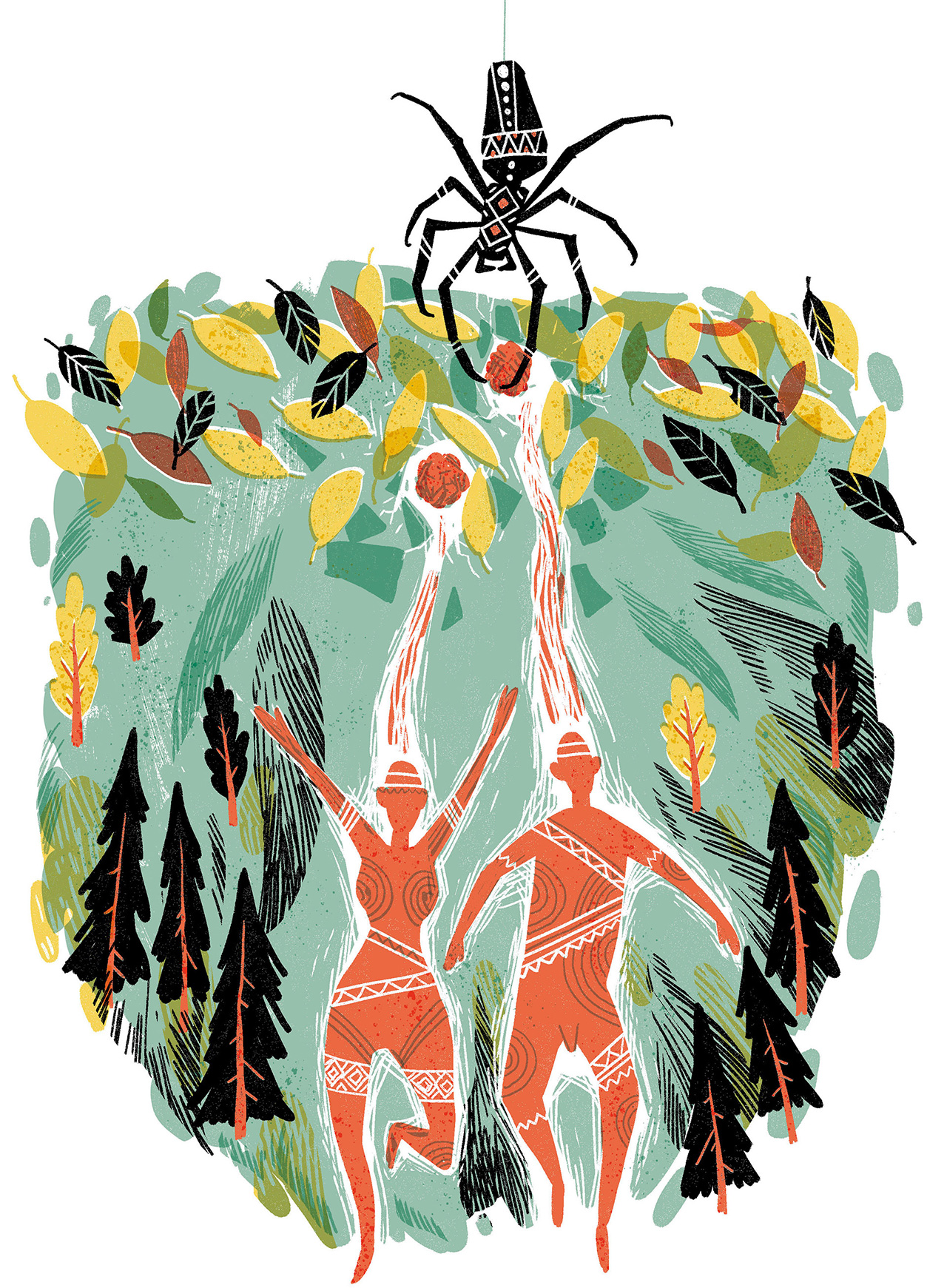
There are a couple of versions on how human beings came from feces. One of them goes like this: There was a kind of insect that lived in and ate tree trunks. After it digested its food and excreted to the ground, the dung became human beings. Another version says that man came from the dung pile made by spiders. In the past when people saw spiders making dung piles, they would help them, and it was forbidden to kill spiders. There is also another record that mentions in the ancient past, there were two holes. A bug pushed dung balls into the two respective holes and a man and a woman appeared from the holes. This pair then gave birth to the Bunun people and descendants.
Besides insect dung versions of the Creation myth, there is also a dog feces version. Once upon a time, a man was walking on the road. He hated the stink of poo so he would avoid them whenever he saw it. But life offers many surprises: the man’s wife found dog feces in their millet basket multiple times. You can imagine how the wife felt when she found dog poo in the food basket, but she still had to get rid of it. One night, as the wife was cleaning up the mess again, the dog poo suddenly spoke! The feces told the couple that it had been secretly protecting them from enemies so that the family could live in peace. After hearing that, the couple adopted the dog poo, which later became human and the ancestor of the Bunun people.
There is another Bunun myth in which human beings came from taro bugs. In the legends of different villages, there are also stories of humans coming from stone or gourds. Nevertheless, it is indeed very rare to hear origin stories that say the people’s ancestors came from feces in the world mythology system.
Creation myths show how different peoples learn about their origins and the ways they view the world and life. Through these myths, different civilizations offer different explanations of where they came from. The indigenous mythologies illustrate the beliefs and respect indigenous peoples have towards all creatures in nature. Myths are not nonsense or ridiculous stories, they honestly reflect the mindsets and views on life of each ethnic group. These rich and exciting Creation myths of this island were often neglected or forgotten in the mainstream education system. Now we hope to introduce these mythologies and our ancestors’ ways of understanding the world and universe to the public, so that everyone can learn more about this land we live on.

- References -
蒲忠成,《台灣原住民的口傳文學》,臺北:常民文化出版社,1996年。
陳千武譯,《台灣原住民的母語傳說》,臺北 : 台原出版社,1994年。
曾建次,《祖靈的腳步:卑南族石生支系口傳史料》達西烏拉灣•畢馬(漢名:田哲益),《原住民神話大系7:卑南族神話與傳說》,臺中:晨星出版社,2003年。
孫大川審訂、陳雨嵐著,《台灣的原住民》,臺北:遠足文化事業股份有限公司,2005年。
葉家寧,《臺灣原住民史:布農族史篇》,南投:國史館臺灣文獻館,2002年。
許木柱、廖守臣、 吳明義,《臺灣原住民史:泰雅族史篇》,南投:國史館臺灣文獻館,2002年。
王嵩山、汪明輝、浦忠成,《臺灣原住民史:鄒族史篇》,南投:國史館臺灣文獻館,2002年。
喬宗忞,《臺灣原住民史:魯凱族史篇》,南投:國史館臺灣文獻館,2001年。
蔡美雲,〈《台灣原住民的神話與傳說》之研究〉,國立彰化大學國文系國語文教學碩士班碩士論文,2008年。




